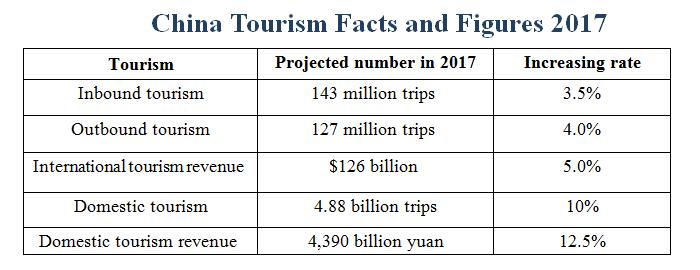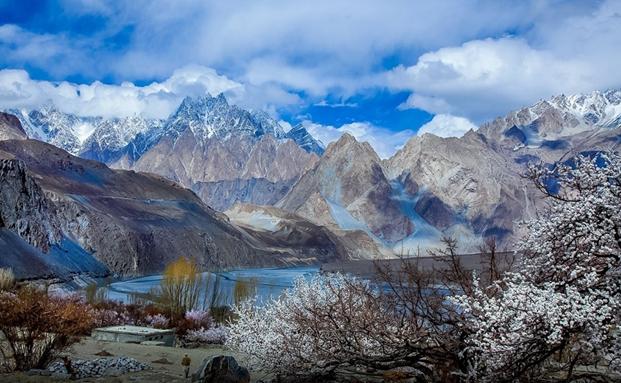Belt and Road Initiative: Tapping tourism
The Belt and Road could play a vital role to drive the development of tourism in countries along the Silk Road.
By Muhammad Ijaz
Tourism industry contributes a major part in GDP and economic growth of many countries. The Belt and Road Initiative can be a great way to promote tourism in the countries along the Silk Road. Peace and protection are the two compulsory conditions needed for growth of tourism in any country. Certain mechanisms can be taken to benefit the tourism sector from the initiative. All the Belt and Road countries need to join hands and work together for the establishment of tourist friendly policies to attract more tourists to their countries.

Every country has a number of touristic specialties which are second to none. The Great Wall of China, the Terracotta Army in Xi'an and the Forbidden City are some of the biggest tourist attractions.
The stunning skyline colonial architecture in Shanghai is a showcase of skyscrapers and colonial European buildings. China's most fascinating scenery namely "the Li River" in Guilin has touched the hearts of many artists. Giant pandas, China's national treasure, in Chengdu are equally loved by Chinese and foreigners. In east China, yellow mountains near Shanghai are famous peaks in China. The Potala Palace in Tibet, also known as "Heart of the Roof of the World", holds different artistic material and articles. World's longest glass suspension bridge, a new structure and attraction for tourists in China's northeastern Hebei province, opened to the public on December 24, 2017. Top 10 Chinese tourism destinations in 2017 were Beijing, Shanghai, Xi'an, Guilin, Chongqing, Chengdu, Kunming, Shenzhen, Hangzhou and Sanya.

The facts and figures of tourism in China shown above are for the year 2017, indicating that the number of tourists coming to China after Belt and Road initiative is increasing every year. The initiative will further boost tourism and growth of economy of China in upcoming years.
Likewise, the mesmerizing and stunning spots in the Belt and Road countries need to be explored as well. The Belt and Road could play a vital role to drive the development of tourism in countries along the Silk Road. All of the Belt and Road countries have different cultural values and beautiful scenery to visit. There is a need to discover and explore the hidden beauty and fascinating nature of the countries along the Silk Road. Moreover, cultural exchange programs can be initiated among Belt and Road countries which in turn will let the people from different backgrounds to come closer and share their cultures.
Top Russian touristic places include Moscow Kremlin, Hermitage Museum, Lake Baikal, Red Square, Saint Basil's Cathedral, Winter Palace, Kazan Cathedral and Russian Museum. Top touristic spots of Mongolia are Gobi Desert, Khuvsgul Lake, Terelj National Park, Karakorum-Erdenezuu, Orkhon valley, Khustai National Park and Ulaanbaatar city. Turkey's top touristic attractions include Aya Sofya, Ephesus, Cappadocia, Topkapi Palace, Pamukkale, Sumela Monastery, Mount Nemrut, Ani, Aspendos. Orchard Road, Resorts World Sentosa, Clarke Quay, Gardens by the Bay, Singapore Botanic Gardens, Night Safari and Singapore Flyer are worth watching points in Singapore. Martin's Island, Lalbagh Fort, Sompaura Mahavihara, Dhanmondi Lake, Patenga Beach are fetching places to visit in Bangladesh. Most attractive touristic destinations of Pakistan are Naltar Valley, Neelum Valley, Fairy Meadows, Shangrila Resort, Deosai Plains, Rama Meadow, Siri Paye, Murree Hills, Swat Valley and Hunza valley. The Heaven on Earth Kashmir, Mini Switzerland 'Swat Valley' and Mountain Kingdom 'Hunza Valley' are the major tourist attractions in Pakistan. The mighty K2 located in Karakoram Pakistan, is the second-highest Mountain on Earth after the Mountain Everest.
Following an improvement in the security situation, tourism in Pakistan has increased by 300 percent over the past few years. According to a recent report, 1.75 million tourists visited Pakistan in 2017 alone. Statistics from the Pakistan Tourism Development Corporation showed that 30 percent travelers were domestic. According to the World Travel and Tourism Council (WTTC) last year, revenue from tourism contributed around US$19.4 billion to Pakistan's economy and made up 6.9 percent of gross domestic product. The WTTC expects that amount to rise to US$36.1 billion within a decade.

The Belt and Road countries should make tourism development strategies through provision of peace and protection. Silk Road tourism can play a significant role in promoting economic exchange and cultural communication between Asia and Europe. With tourism, business and trade of the Silk Road countries will be enhanced as well. After the Trade Road, Culture Gallery and Traffic Road, the Silk Road will be a bright tourist route in the world map in the 21st century. At present, the Silk Road tourism has started, however, there is a need of awareness among tourists to promote and guide about the tourist spots. Belt and Road countries with beautiful natural scene, old history, profound culture and rich ethnic flavor will surely become a global top tourist destination.
Silk Road countries need proper market orientation, government need to take leading role and active participation to promote tourism. Silk Road countries need to make mutual efforts to promote tourism industry. An e-visa, e-ticketing and e-booking service can be introduced specially for Belt and Road countries which in turn will facilitate tourists to reach their desired destination.
With growth of tourist industry, a number of other areas like trade, logistics, culture, GDP, economic industry etc. of Silk Road countries will be boosted. In short, developing countries will have more opportunities to boost their economy and catch the golden opportunity of being a part of China's Belt and Road Initiative.
The author is a doctoral student at Shandong University School of Pharmaceutical Sciences, and China Scholarship Council recipient.

